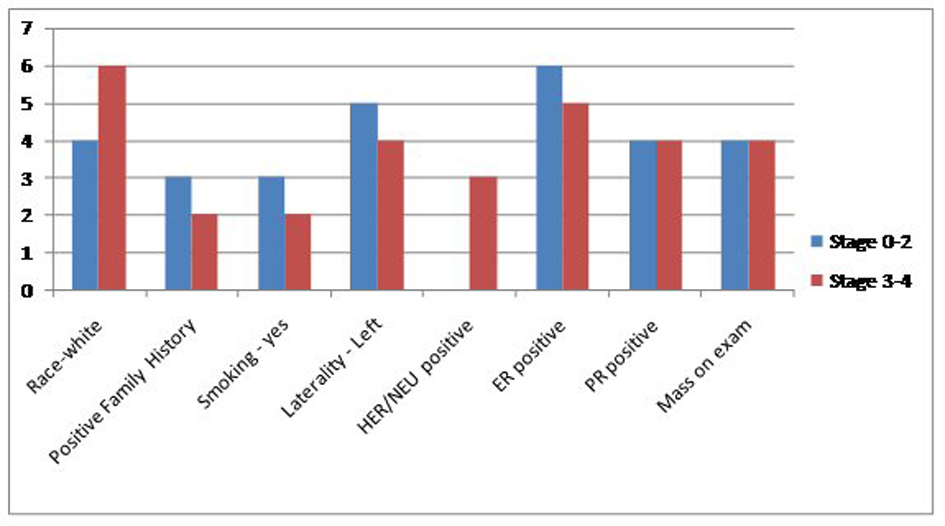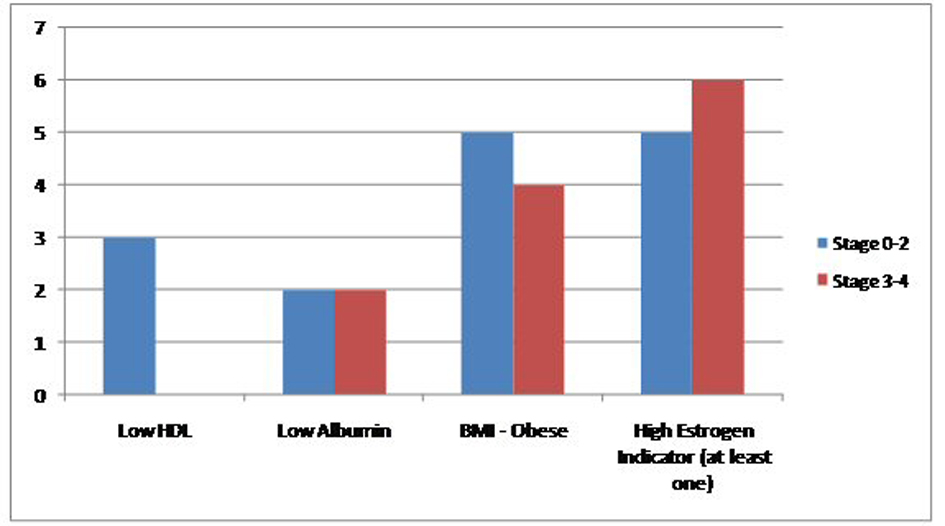
Figure 1. Comparison of the general characteristics of the study population between extensive and non-extensive stages of MBC.
| World Journal of Oncology, ISSN 1920-4531 print, 1920-454X online, Open Access |
| Article copyright, the authors; Journal compilation copyright, World J Oncol and Elmer Press Inc |
| Journal website http://www.wjon.org |
Original Article
Volume 5, Number 2, April 2014, pages 55-61
Male Breast Cancer and Hyperestrogenemia: A Thirteen-Year Review
Figures


Tables
| Stage 0-2 (%) | Stage 3-4 (%) | P value | |
|---|---|---|---|
| Race | 0.455 | ||
| Black | 2 (100) | 0 (0) | |
| White | 4 (40) | 6 (60) | |
| Family history | 1 | ||
| Negative | 3 (60) | 2 (40) | |
| Positive | 3 (60) | 2 (40) | |
| Smoking | 1 | ||
| No | 3 (50) | 3 (50) | |
| Yes | 3 (60) | 2 (40) | |
| Laterality | 1 | ||
| Right | 1 (33.3) | 2 (66.6) | |
| Left | 5 (55.5) | 4 (44.4) | |
| HER/NEU | 0.167 | ||
| Negative | 5 (71.4) | 2 (28.5) | |
| Positive | 0 (0) | 3 (100) | |
| ER | 1 | ||
| Negative | 0 (0) | 1 (100) | |
| Positive | 6 (54.5) | 5 (45.4) | |
| PR | 1 | ||
| Negative | 2 (50) | 2 (50) | |
| Positive | 4 (50) | 4 (50) | |
| Mass on PE | 1 | ||
| No | 1 (50) | 1 (50) | |
| Yes | 4 (50) | 4 (50) | |
| Low HDL | 0.143 | ||
| No | 1 (25) | 3 (75) | |
| Yes | 3 (100) | 0 (0) | |
| Low albumin | 1 | ||
| No | 3 (50) | 3 (50) | |
| Yes | 2 (50) | 2 (50) | |
| BMI | 1 | ||
| Normal | 1 (50) | 1 (50) | |
| Obese | 5 (55.5) | 4 (44.4) | |
| High estrogen score | 1 | ||
| None | 0 (0) | 1 (100) | |
| At least one | 5 (45.5) | 6 (54.5) |
| Stage 0-2 (Less extensive group) | Stage 3-4 (More extensive group) | |
|---|---|---|
| Surgery | ||
| No | 2 | 4 |
| Yes | 3 | 2 |
| Beam radiation | ||
| No | 2 | 2 |
| Yes | 3 | 3 |
| Chemotherapy | ||
| No | 2 | 3 |
| Yes | 3 | 1 |
| Hormonal therapy | ||
| No | 2 | 2 |
| Yes | 4 | 3 |